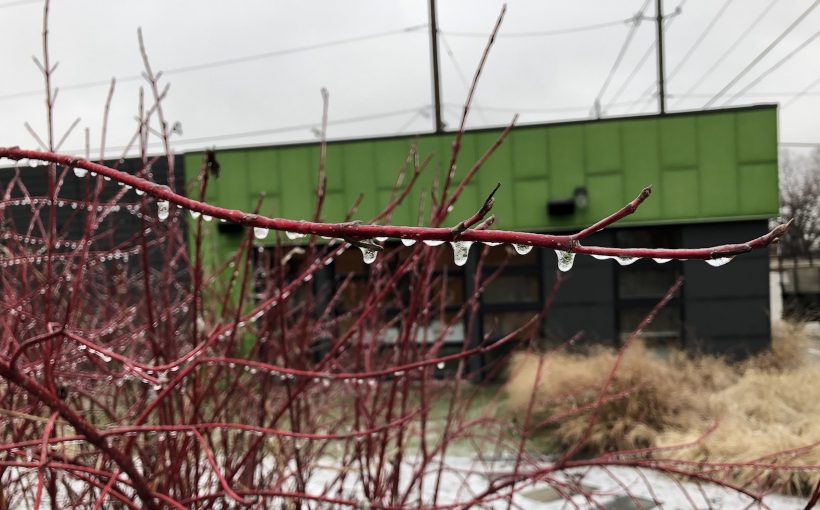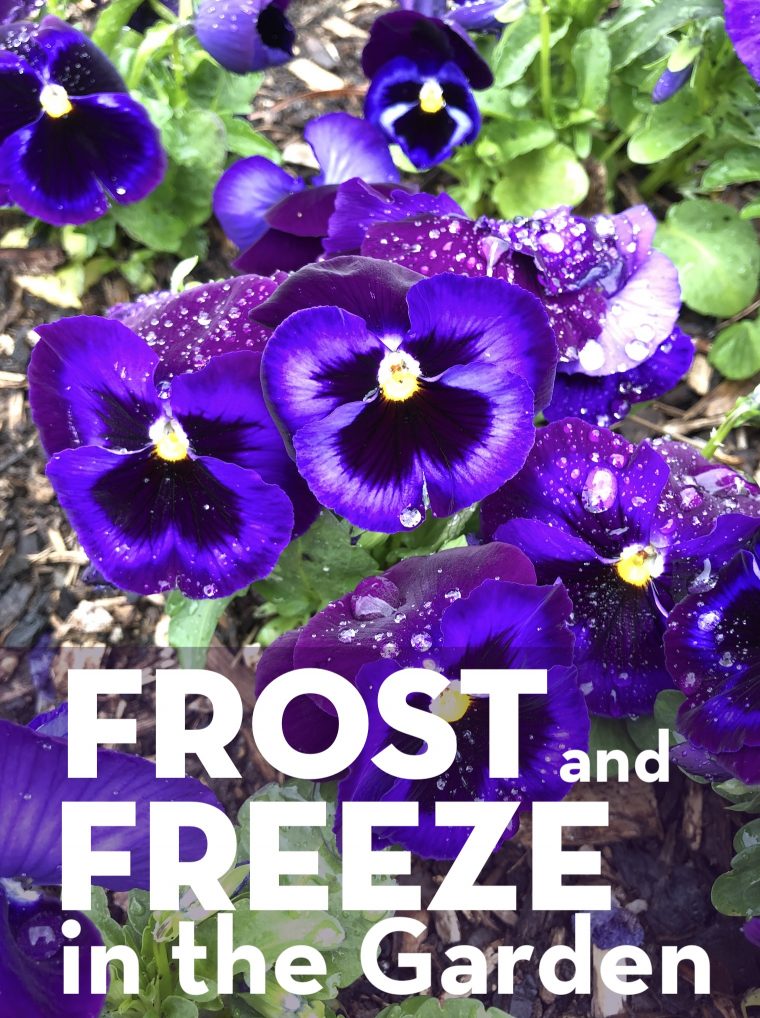Savvy gardeners watch for frosts at both edges of the growing season. Read on for our breakdown of terms, the difference between a frost and a freeze, and what you can do to protect your garden plants.
In this post, you’ll find:
- National Weather Service Terms
- How Frost and Freeze Affect Plants
- How to Protect Plants from Frost and Freeze Damage
National Weather Service Terms
The National Weather Service issues the following advisories/watches/warnings in spring (when it’s late enough for a frost to damage new crops and plants) and in fall to help gardeners and farmers protect plants.
Frost Advisory
A frost advisory means the minimum air temperature is forecast to be 33 to 36 degrees on a clear and calm night (one with winds of 5 mph or less). As a result, frost—the formation of thin ice crystals on the ground or other surfaces—is likely.
The kind of freeze that develops under frost advisory conditions is a radiation freeze. Radiation freeze involves an inversion; the heat radiating from the surface of the earth rises and the cooler air above it is pushed down. As a result, temperatures near the surface of the earth drop below freezing, even though the air temperature may be above freezing.
Freeze Watch
The NWS issues a freeze watch when there is potential for significant, widespread freezing temperatures within the next 24 to 36 hours. So the minimum air temperature might (not definitely will) fall to 32 degrees or below.
Freeze Warning
A freeze warning means that significant, widespread freezing temperatures are expected. If a freeze warning is issued, you can expect that the air temperature will drop to 32 degrees or below. The freeze that happens during a freeze warning is an advective freeze.
Advective freezes are windborne and occur when the wind speed is above 5 mph. A cold air mass moves in, bringing freezing temperatures with it. Clouds may be present. (An advective freeze occurs under the opposite conditions of the radiation freeze).
You might also hear the term hard freeze, which happens when the air temperature falls below 28 degrees. Many plants can handle a frost, but few will come unscathed through a hard freeze.
How Frost and Freeze Affect Plants
Frost and freezes occur under different conditions, but the damage they cause to plants is the same. In both cases, water inside of plant cells freezes, puncturing cell walls. The actual layer of ice on the outside of the plant in a frost doesn’t damage the plant; it’s the water freezing inside that does.
Frost and freeze damage blackens tender plants, those tropical babies like tomatoes, dahlias, and impatiens. Common signs of damage include wilting of foliage (the leaves look water-soaked), blackening or spotting of foliage, and scorch marks on foliage. It also may damage blooms on otherwise hardy plants.
Damage may not be immediately evident, especially in the case of fruiting trees. Michigan State University Extension published these articles about freeze damage to fruit trees and the temperatures at which buds and blooms may be damaged.
Frost and freeze damage is cumulative. The more freezing nights your plants are exposed to, the greater the chance of damage.
How to Protect Plants from Damage
As a home gardener, you have a few options to protect your plants from cold damage. These techniques work better in a radiation freeze (frost advisory) than in an advective freeze (freeze warning).
- Water the ground around your freeze-damage-prone plants the night before a frost. It can increase the amount of heat held by the soil around your plant, buying you a safety zone in a radiation freeze.
- Cover your plants. Covers can give you a 2 degree to 5 degree range of protection in a radiation freeze. Use woven cloth rather than paper or plastic; woven cloth has more insulating power. Remove the covers the following morning, preferably before sunrise.
- Pay attention to frost dates. While you can’t do much about, say, a cherry tree that blooms early and then gets hit by frost, you can choose to not plant tender annuals and vegetables before the frost-free date. In central Indiana, the frost-free date is around May 10. So no matter what the weather looks like, hold off on planting tomatoes and other tender plants until at least then.
- Choose plants hardy to zone 6 or lower. These plants can take our winter temperatures and often shrug off frost damage. Although central Indiana is in hardiness zone 6a, Spotts Garden Service usually chooses trees, shrubs, and perennial plants hardy to at least zone 5 for an extra measure of protection. For spring or fall container plantings, choose annuals that are considered cold hardy or frost tolerant.

